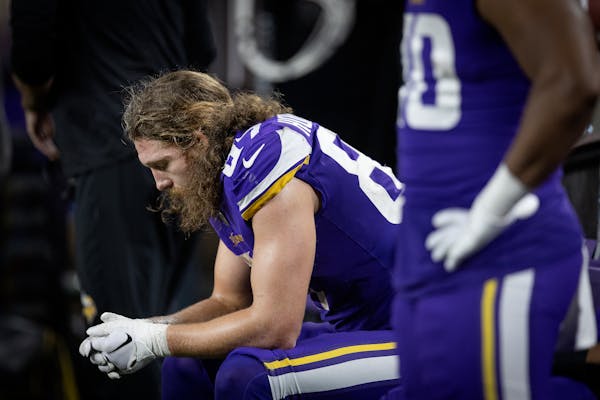As part of our expanded Vikings playoff coverage, we answered daily reader questions. You can email your questions to michael.rand@startribune.com, or send them to @RandBall on Twitter.
JJ was basically eliminated from the game after the first quarter. How did they do that? — @NsportsfanM.
Great question, and one that the Vikings (and their future opponents) likely will be trying to answer. Justin Jefferson had four catches (for 30 yards) on the Vikings' opening touchdown drive but managed just three more grabs for 16 yards the rest of the game. After halftime, he had just one catch for 4 yards, and play-by-play data indicates he wasn't targeted at all in the fourth quarter.
This was after Jefferson went for 133 yards and a TD the last time these teams met just a few weeks ago. So what did the Giants do differently to slow Jefferson down?
Well, a couple things jump out: One, they had better personnel. Top cornerback Adoree' Jackson and safety Xavier McKinney were both injured and did not play in that 27-24 December win for the Vikings. They combined for 15 tackles and a pass breakup Sunday.
And the Giants more aggressively played Jefferson with bracket coverage, devoting two defenders to him to limit his opportunities. That's a testament to just how good Jefferson is, but also perhaps what the Giants thought of the Vikings' other pass-catching options by comparison because they were essentially daring them to win single-coverage matchups in a lot of cases.
Tight end T.J. Hockenson (10 catches, 129 yards) thrived, particularly in the middle of the field. But Adam Thielen and K.J. Osborn, the Vikings' other two primary wide receivers, had just five catches for 70 yards combined. And running back Dalvin Cook gained just 10 yards on his six catches.
Of course, Jefferson is also good enough that he should demand targets even when it seems like he's covered — with the final Vikings' offensive snap being a prime example. QB Kirk Cousins threw well short of the first down marker to Hockenson on a fourth-and-8 play instead of giving Jefferson a chance to make a play in double-coverage.
In the bigger picture, though, the Vikings and Jefferson should expect to see more of this type of coverage in 2023 and beyond — at least until they show they can scheme around it or make teams pay in other ways.
Vatrano's hat trick sends the Ducks to a 4-1 win over the Golden Knights
Local target-blade throwers competing at world championships this weekend

